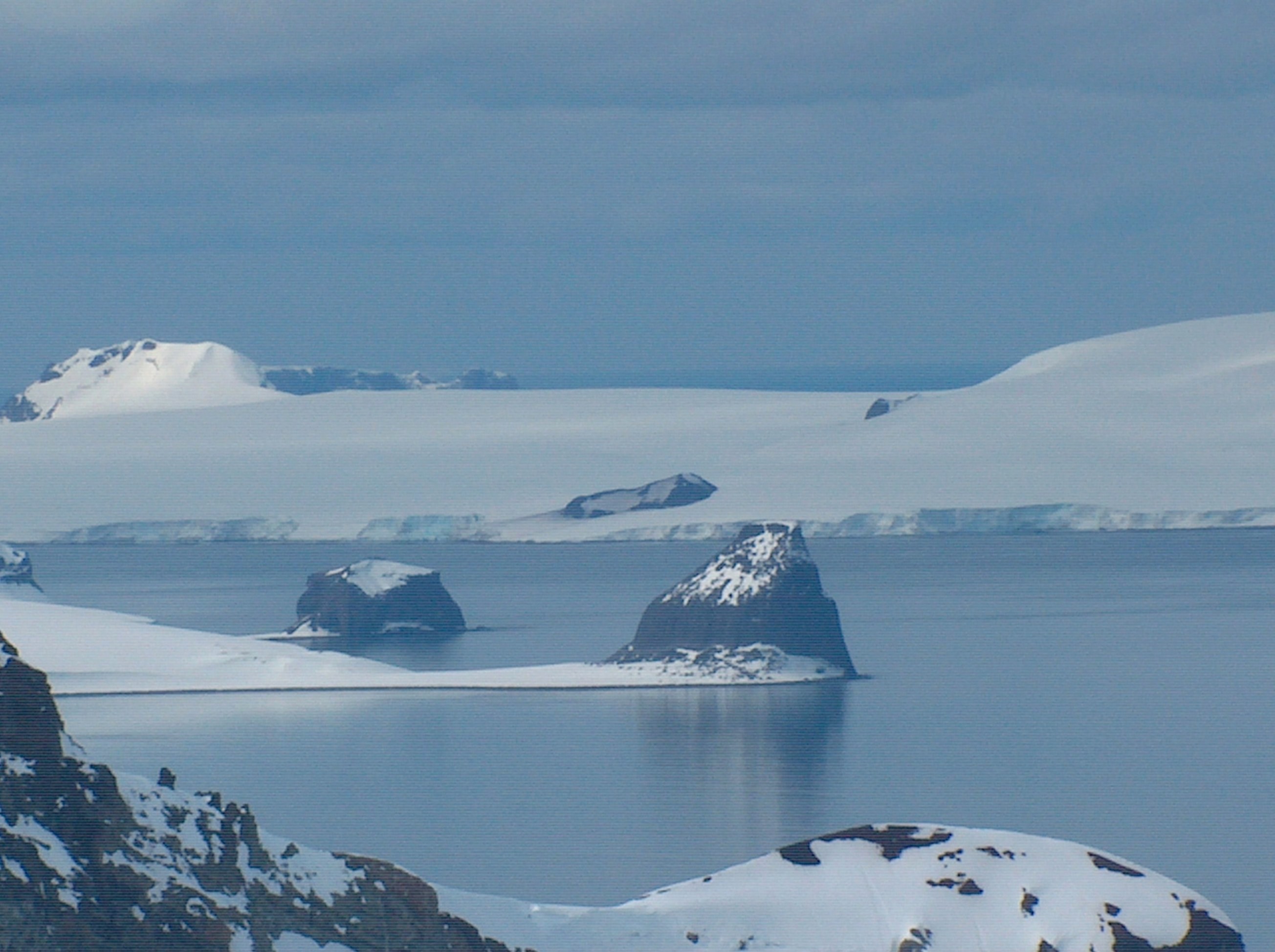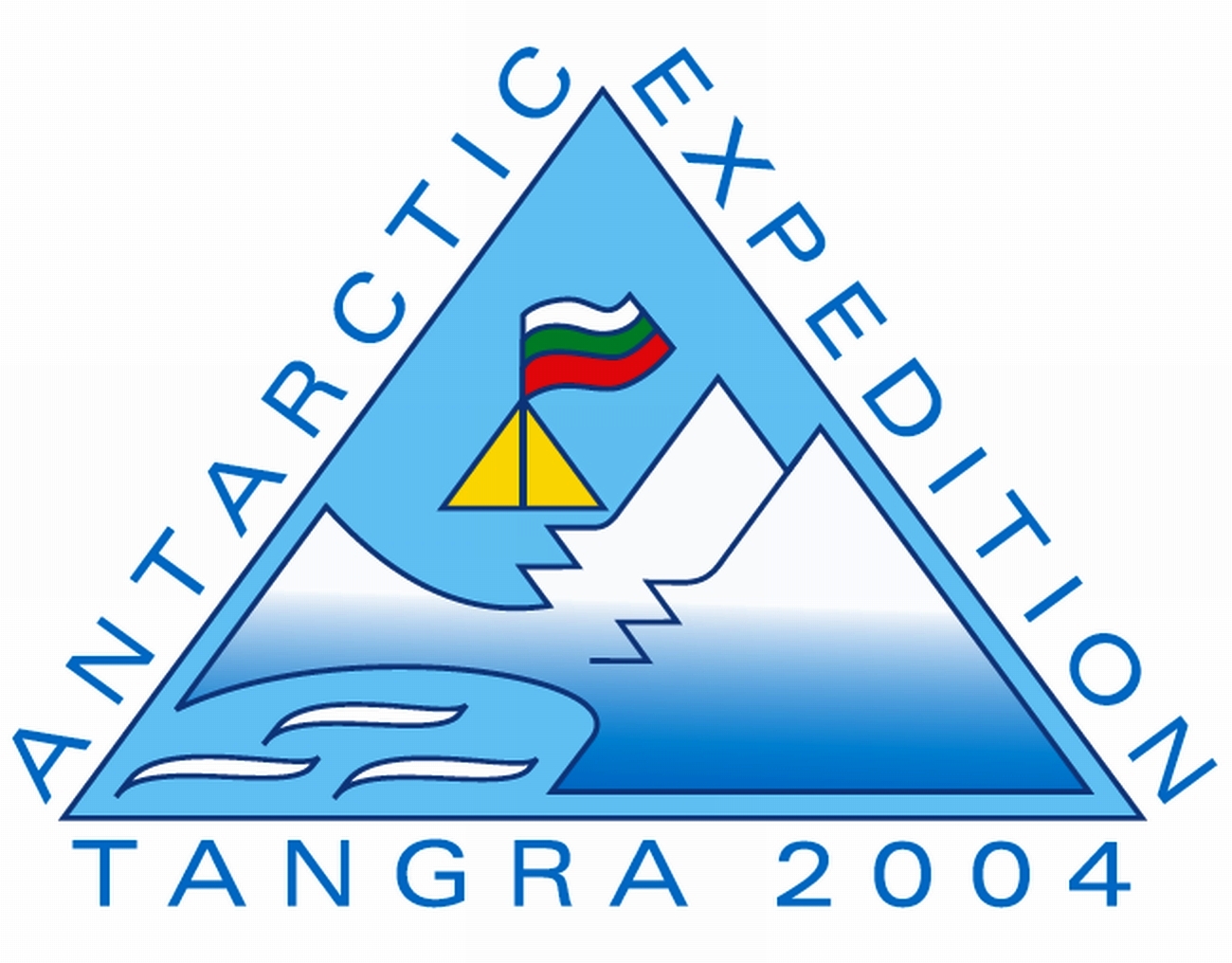|
Helis Nunatak
Helis Nunatak (Nunatak Helis \'nu-na-tak 'he-lis\) is a crown-shaped rocky peak of elevation 340 m in Vidin Heights on Varna Peninsula, Livingston Island in the South Shetland Islands, Western Antarctica. The peak is named after the ancient Thracian capital town of Helis whose remains are located at Sveshtari, northeastern Bulgaria. Location The peak is located at which is 3 km west of Edinburgh Hill, 1.9 km south of Sharp Peak and 1.85 km east-southeast of Madara Peak (Bulgarian mapping in 2005 and 2009 from the Tangra 2004/05 topographic survey). Maps * L.L. Ivanov et al. Antarctica: Livingston Island and Greenwich Island, South Shetland Islands. Scale 1:100000 topographic map. Sofia: Antarctic Place-names Commission of Bulgaria, 2005. * L.L. IvanovAntarctica: Livingston Island and Greenwich, Robert, Snow and Smith Islands Scale 1:120000 topographic map. Troyan: Manfred Wörner Foundation, 2009. * A. Kamburov and L. Ivanov. Bowles Ridge and Central Tangra Mou ... [...More Info...] [...Related Items...] OR: [Wikipedia] [Google] [Baidu] |
Edinburgh Hill
Edinburgh Hill is a narrow point projecting 650 m from the east coast of Varna Peninsula, Livingston Island in the South Shetland Islands, Antarctica into McFarlane Strait and ending up in a conspicuous rocky hill of elevation 180 m. The point forms the northwest side of the entrance to Moon Bay. The area was visited by early 19th century sealers. The feature is named after the city of Edinburgh, Scotland. Location The point is located at which is 13.15 km northwest of Renier Point, 7.52 km east of Miziya Peak, 2 km south-southwest of Inott Point, and 7 km southwest of Yovkov Point, Greenwich Island Greenwich Island (variant historical names ''Sartorius Island'', ''Berezina Island'') is an island long and from (average ) wide, lying between Robert Island and Livingston Island in the South Shetland Islands. Surface area . The name Greenwic .... British mapping in 1968, Spanish in 1991, and Bulgarian in 2005 and 2009. Maps * L.L. Ivanov et al. Ant ... [...More Info...] [...Related Items...] OR: [Wikipedia] [Google] [Baidu] |
Composite Antarctic Gazetteer
The Composite Gazetteer of Antarctica (CGA) of the Scientific Committee on Antarctic Research (SCAR) is the authoritative international gazetteer containing all Antarctic toponyms published in national gazetteers, plus basic information about those names and the relevant geographical features. The Gazetteer includes also parts of the International Hydrographic Organization (IHO) General Bathymetric Chart of the Oceans (GEBCO) gazetteer for under-sea features situated south of 60° south latitude. , the overall content of the CGA amounts to 37,893 geographic names for 19,803 features including some 500 features with two or more entirely different names, contributed by the following sources: {, class="wikitable sortable" ! Country ! Names , - , United States , 13,192 , - , United Kingdom , 5,040 , - , Russia , 4,808 , - , New Zealand , 2,597 , - , Australia , 2,551 , - , Argentina , 2,545 , - , Chile , 1,866 , - , Norway , 1,706 , - , Bulgaria , 1,450 , - , G ... [...More Info...] [...Related Items...] OR: [Wikipedia] [Google] [Baidu] |
Tangra 2004/05
The Tangra 2004/05 Expedition was commissioned by the Antarctic Place-names Commission at the Ministry of Foreign Affairs of Bulgaria, managed by the Manfred Wörner Foundation, and supported by the Bulgarian Antarctic Institute, the Institute of Mathematics and Informatics at the Bulgarian Academy of Sciences, Bulgarian Posts, Uruguayan Antarctic Institute, Peregrine Shipping (Australia), and Petrol Ltd, TNT, Mtel, Bulstrad, Polytours, B. Bekyarov and B. Chernev (Bulgaria). Expedition team Dr. Lyubomir Ivanov (team leader), senior research associate, Institute of Mathematics and Informatics at the Bulgarian Academy of Sciences; chairman, Antarctic Place-names Commission; author of the 1995 Bulgarian Antarctic ''Toponymic Guidelines'' introducing in particular the present official system for the Romanization of Bulgarian; participant in four Bulgarian Antarctic campaigns, and author of the first Bulgarian Antarctic topographic maps. Doychin Vas ... [...More Info...] [...Related Items...] OR: [Wikipedia] [Google] [Baidu] |
Madara Peak
Madara Peak ( bg, връх Мадара, vrah Madara, ) is a 430 m peak in Vidin Heights on Varna Peninsula, Livingston Island in the South Shetland Islands, Antarctica. Surmounting Panega Glacier to the south. Steep and partly ice-free southern slopes. The peak is named after the historic site of Madara in northeastern Bulgaria. Location The peak is located at , which is 1.26 km northeast of Samuel Peak, 1.25 km north-northwest of Sakar Peak, 1.3 km northeast of Samuel Peak, 2.6 km east of Miziya Peak, 1.4 km south-southwest of Rakovski Nunatak, 2.5 km southwest of Sharp Peak and 4.97 km west by north of Edinburgh Hill (Bulgarian topographic survey Tangra 2004/05, and mapping in 2005 and 2009). Maps * L.L. Ivanov et al. Antarctica: Livingston Island and Greenwich Island, South Shetland Islands. Scale 1:100000 topographic map. Sofia: Antarctic Place-names Commission of Bulgaria, 2005. * L.L. IvanovAntarctica: Livingston Island and Greenwich, ... [...More Info...] [...Related Items...] OR: [Wikipedia] [Google] [Baidu] |
Sharp Peak, Livingston Island
Sharp Peak is a sharp rocky peak rising to 500 m in the northeast of Vidin Heights on Varna Peninsula, Livingston Island in the South Shetland Islands, Antarctica. The peak is surmounting Rose Valley Glacier to the northwest and Debelt Glacier to the south. The feature was named descriptively in a 1935 British chart. Location The peak is located at which is 2.38 km south by west of Karavelova Point, 3.28 km west of Inott Point, 3.28 km northwest of Edinburgh Hill, 1.9 km north by east of Helis Nunatak, 3.73 km northeast of Samuel Peak and 5.08 km east-northeast of Miziya Peak (British survey in 1957-59 and mapping in 1968, Spanish mapping in 1991, and Bulgarian in 2005 and 2009). See also * Varna Peninsula * Livingston Island Livingston Island (Russian name ''Smolensk'', ) is an Antarctic island in the Southern Ocean, part of the South Shetlands Archipelago, a group of Antarctic islands north of the Antarctic Peninsula. It was the first ... [...More Info...] [...Related Items...] OR: [Wikipedia] [Google] [Baidu] |
Sveshtari
The Thracian Tomb of Svestari (Свещарска гробница, ''Sveshtarska grobnitsa'') is 2.5 km southwest of the village of Sveshtari, Razgrad Province, which is 42 km northeast of Razgrad, in northeast Bulgaria. The tomb is probably the grave of Dromichaetes ( grc, Δρομιχαίτης, Dromichaites; c. 300 – c. 280 BC) who was a king of the Getae on both sides of the lower Danube (present day Romania and Bulgaria) around 300 BC, and his wife, the daughter of King Lysimachus (Greek: Λυσίμαχος, ''Lysimachos''; c. 360 BC – 281 BC) who was a general and ''diadochus'' (i.e. "successor") of Alexander the Great. The tomb is a UNESCO World Heritage Site. General information Discovered and excavated in 1982 during excavations at Mound No 7 of the East Mound Necropolis of Sboryanovo (''Ginina Mogila'') - a tumulus of the early Hellenistic period, the Sveshtari tomb was built in the first quarter of the 3rd century BC. The tomb's construction reflects t ... [...More Info...] [...Related Items...] OR: [Wikipedia] [Google] [Baidu] |
Helis
Helis ( fa, هليس, also Romanized as Helīs; also known as Helīs Maḩalleh and Helīs Maḩalleh-ye Shīrābād) is a village in Haviq Rural District, Haviq District, Talesh County, Gilan Province, Iran Iran, officially the Islamic Republic of Iran, and also called Persia, is a country located in Western Asia. It is bordered by Iraq and Turkey to the west, by Azerbaijan and Armenia to the northwest, by the Caspian Sea and Turkmeni .... At the 2006 census, its population was 308, in 78 families. References Populated places in Talesh County {{Talesh-geo-stub ... [...More Info...] [...Related Items...] OR: [Wikipedia] [Google] [Baidu] |
Thrace
Thrace (; el, Θράκη, Thráki; bg, Тракия, Trakiya; tr, Trakya) or Thrake is a geographical and historical region in Southeast Europe, now split among Bulgaria, Greece, and Turkey, which is bounded by the Balkan Mountains to the north, the Aegean Sea to the south, and the Black Sea to the east. It comprises southeastern Bulgaria (Northern Thrace), northeastern Greece (Western Thrace), and the European part of Turkey ( East Thrace). The region's boundaries are based on that of the Roman Province of Thrace; the lands inhabited by the ancient Thracians extended in the north to modern-day Northern Bulgaria and Romania and to the west into the region of Macedonia. Etymology The word ''Thrace'' was first used by the Greeks when referring to the Thracian tribes, from ancient Greek Thrake (Θρᾴκη), descending from ''Thrāix'' (Θρᾷξ). It referred originally to the Thracians, an ancient people inhabiting Southeast Europe. The name ''Europe'' first referred to ... [...More Info...] [...Related Items...] OR: [Wikipedia] [Google] [Baidu] |
Western Antarctica
West Antarctica, or Lesser Antarctica, one of the two major regions of Antarctica, is the part of that continent that lies within the Western Hemisphere, and includes the Antarctic Peninsula. It is separated from East Antarctica by the Transantarctic Mountains and is covered by the West Antarctic Ice Sheet. It lies between the Ross Sea (partly covered by the Ross Ice Shelf), and the Weddell Sea (largely covered by the Filchner-Ronne Ice Shelf). It may be considered a giant peninsula, stretching from the South Pole towards the tip of South America. West Antarctica is largely covered by the Antarctic ice sheet, but there have been signs that climate change is having some effect and that this ice sheet may have started to shrink slightly. Over the past 50 years, the west coast of the Antarctic Peninsula has been - and still is - one of the most rapidly warming parts of the planet, and the coasts of the Peninsula are the only parts of West Antarctica that become (in summer) ice-fre ... [...More Info...] [...Related Items...] OR: [Wikipedia] [Google] [Baidu] |







